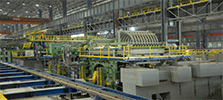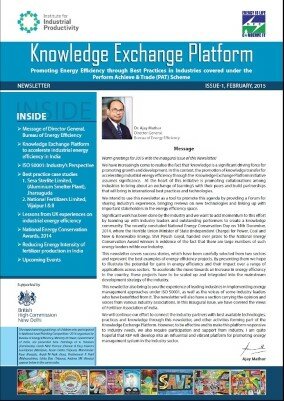BOOSTING INDUSTRIAL ENERGY EFFICIENCY IN THE US THROUGH CLEAN POWER PLAN
The Environmental Protection Agency’s Clean Power Plan is anticipated to cut greenhouse gas emissions in the power generation sector by 32 percent by 2030, based on 2005 levels.
The Potential
-
The potential for energy efficiency in industry is 5,030 trillion BTUs on a primary energy basis, or an 18% saving*111(d) could support 20 GW of new CHP nationwide**; with 10 GW concentrated in the Midwest and Southeast****EIA AEO 2008, McKinsey analysis** ACEEE*** CCAP
Section 111(d) of the Clean Power Plan (CPP) could provide a powerful new driver for industrial energy efficiency (IEE) programs and combined heat and power (CHP). As the CPP is implemented across the states, IIP’s key focus will be on helping to ensure well-designed strategies that incorporate IEE in state compliance plans. These strategies can create a path for industrial energy users to receive monetary rewards for CHP and other efficiency investments, not only through rate-based incentive programs established by the states, but also through creation of market-based mechanisms to sell credits.
In 2014, IIP partnered with David Gardiner & Associates (DGA) to evaluate combined heat and power as an option for CPP compliance. As part of this effort, IIP’s US team and DGA developed a report that contains specific modules and elements highlighting best practices and actionable recommendations for the integration of CHP into a state’s compliance plan. CHP, and other IEE measures, can produce large blocks of low-cost energy and carbon savings, and could therefore be attractive to state air and energy regulators as they develop their carbon pollution reduction plans.
IIP also partnered with the National Electrical Manufacturers Association (NEMA) on the development of a technical white paper on the role that privately-delivered industrial energy efficiency measures (including energy management systems and the US Department of Energy’s Superior Energy Performance (SEP) program) could play as compliance options for the CPP. As part of this work, IIP submitted its comments to the EPA on the proposed Clean Power Plan in December 2014 and has continued outreach efforts at national and state levels in partnership with the Industrial Energy Efficiency Coalition, which comprises NEMA and 14 industrial energy efficiency service providers.
IIP will continue to work on CPP initiatives, focusing its efforts on outreach to targeted states in the industrial Midwest – including a pilot program to help a leading Midwestern state work through the process of incorporating industrial energy efficiency and CHP into the state’s compliance plans, and to develop model pathways that could serve as a template for other states to consider as they develop their plans over the next 1-3 years.
Categories
Combined Heat and Power (CHP), Policy, Technologies and Measures
A template and policy options for state regulators.
Categories
Cross sectoral, Policy, Energy management
IIP and NEMA submitted a technical paper to the EPA on the role of industrial energy efficiency as a compliance option under the proposed carbon emission guidelines for existing electric generating units under the Clean Air Act. The technical paper…



